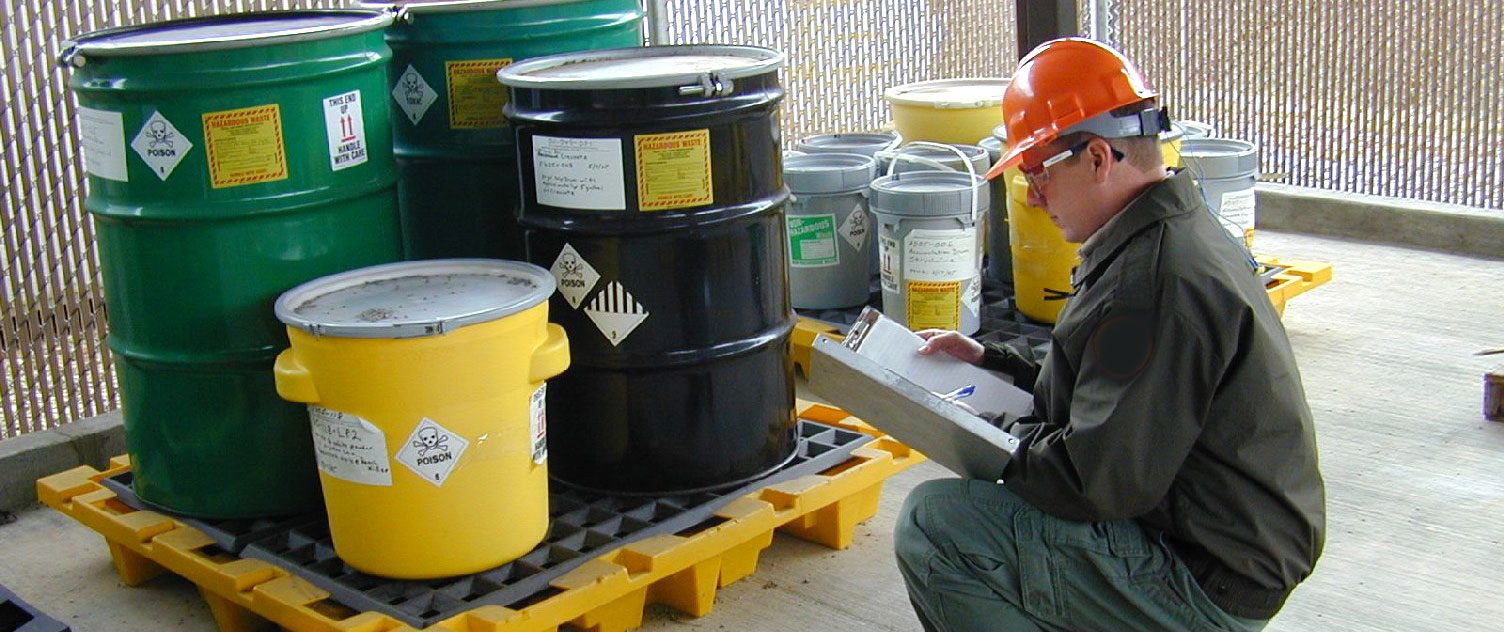
In our last blog, Top 4 Hazardous Waste Container Violations, we began discussing some violations that can occur when storing your hazardous waste. The main reasons people schedule hazardous waste pickups is to stay compliant with EPA regulations or because they have received an audit by the EPA and need to dispose of materials they did not know were hazardous. The goal of hazardous waste management is to stay compliant, avoid violations and therefore avoid fines that accompany violations. We have compiled the top 11 reasons facilities receive violations from the EPA, and how to avoid them.
1. Failure to label hazardous waste containers properly
Labeling is the easiest aspect when keeping your stored hazardous waste in compliance. However, it is also one of the most common violations facilities receive. Failing to label or mislabeling containers can lead to significant issues for all parties involved. Labeling is so important because in the case of an emergency, like a spill or an accident, those cleaning it up need to know how to properly handle the hazardous materials without causing further damage or getting injured. If the materials are mislabeled when being transported by a third-party facility, it causes more paperwork to be done once it’s reached the recycling facility and typically results in an additional fee from the facility as well.
2. Failure to perform inspections
Performing weekly inspections of the storage facilities and containers are required, as well as monthly inspections of all hazardous waste safety equipment. This is another one of those easy violations to avoid and is also one of the most common violations. Again, this is for the safety of all parties. In order to inspect storage facilities, a responsible party will take a walk through the storage area, inspect the containers for the top 4 hazardous waste violations, assure that there are no spills, and log that you did the inspection. Inspecting safety equipment is just as easy. Assure that it is intact and once a month test the equipment (i.e. eyewash station or shower) and then log that you did so.

3. Failure to properly identify waste
This violation can bring on a hefty fine and for good reason. When storing hazardous wastes you must know what you are storing in order to determine how it should be stored. If you have two types of hazardous wastes that are reactive, you do not want to store them near each other and especially not in the same container. This could result in container malfunction, explosion, injuries, you name it. Having materials properly identified plays into having them properly labeled as well.
4. Failure to provide an adequate contingency plan
A contingency plan is an in-case-of-emergency plan. This plan is comprised of who the point of contact is, where safety equipment is located, and how you expect things to be handled depending on certain situations. This can be a harder task to take on if you don’t have a true understanding of all regulations that the EPA, DEP, and OSHA have in place. Company’s that do third-party auditing will often assist in the creation of a contingency plan after they have done a walkthrough of your facilities to get an understanding of how your facility functions.
5. Disposing and treating hazardous materials without a license
Occasionally a facility might attempt to treat or dispose of hazardous materials without having proper licensing and training. This is a major violation since it is likely that without proper training and licensing, a facility would not know how to properly dispose of or treat hazardous materials. This could cause significant harm to the environment, employees, and the person(s) that are improperly disposing of hazardous materials.
Keep your eyes peeled for Top 11 Hazardous Waste Management Violations – Part II, coming out in two weeks!
